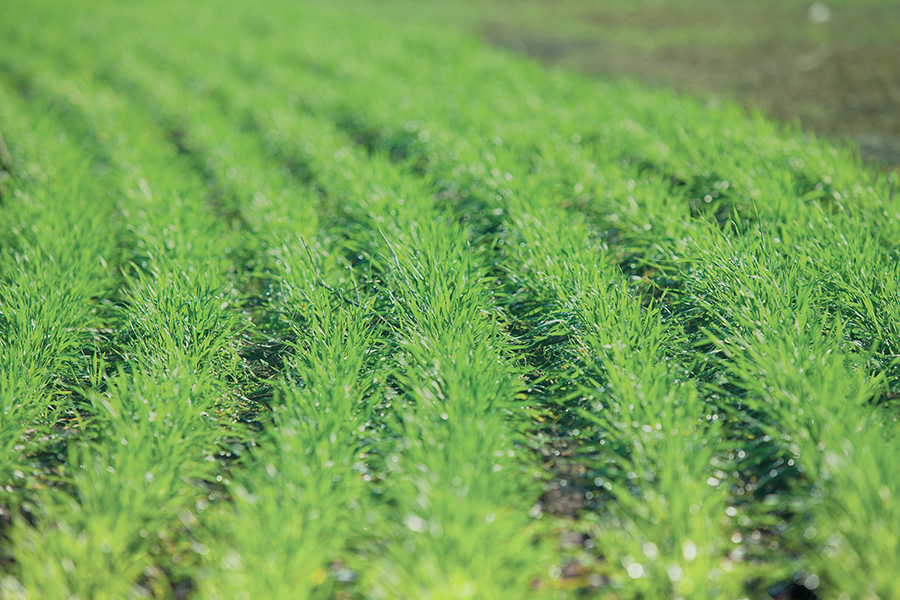Late but not lost: How to optimise late-drilled wheat crops
18th October 2024
With reduced pest, weed and disease pressure, there is more going for late-drilled cereals than it first seems. Farmers Guide asks two Agrii experts for advice on how to get them off to the best start.

Following last autumn’s challenging weather, there was much talk from growers and agronomists about cereal crops being drilled earlier this autumn. However, establishing cereals from November onwards is necessary for farmers with late-harvested crops like sugar beet, potatoes and maize in the rotation or even those managing difficult grassweeds and take-all.
Seedbed quality
Farmers should not assume that later drillings will yield less than early ones, says John Miles, seed technical manager for Agrii. “Some of the seedbeds that were made at the back-end of last season were decent, and consequently, people had good yields in harvest ’24 from some very late drilled crops.”
The biggest challenge when going later in the autumn is creating a seedbed of a good enough standard to drill into, agrees Neil Harper, an Agrii agronomist based in Kent. “The half-sown, half-grown adage is true at this time. If you put a crop in and compromise it at drilling, it will be compromised the whole way through.”
If the conditions allow, rolling to consolidate the seedbed should be considered on a case-by-case basis, but it might be better to defer it to the early spring to encourage tillering, adds Neil.
Variety key
In terms of variety choice, John says the most popular varieties like Dawsum, Insitor, Champion and Beowulf will all perform as expected when drilled later, and that the variety should be chosen depending on the agronomic characteristics desired by the farmer.
Agrii conducts its own variety trial work, producing variety sustainability ratings (VSR). From observing those trials, John picks out Bamford and Blackstone as two varieties that seem to have good vigour to get up and go.
John tends to reserve judgment on the seed rates he recommends until he has seen the quality of the seedbed. “In really good conditions, you could be as low as 400 seeds/m2, but then it could go as high as 550 seeds/m2 in more challenging situations. It depends on how the sugar beet came out, for example.
“The Agrii Stow Longa trials site has consistently shown high seed losses on a Hanslope clay soil type. We have always tended to be around 55% establishment, much lower than the 80–90% farmers believe they are getting.”
Nutrition
As well as a vigorous variety, Neil focuses on nutrition to encourage rapid early growth. Phosphate is the most apparent plant nutrient to encourage vigorous establishment and root development. However, leaching can be challenging at that time of year, especially on soils with high P indices, he adds.
A nutrient-releasing agent like Agrii-Start Release can increase available phosphate in the soil and other crop nutrients for uptake through plant roots, says Neil. Agrii-Start Release can be used across all soil types to help unlock P for crop uptake on sites where phosphate availability may be limiting.
“At that time of year, including an adjuvant like Backrow Max will help hold it in the soil surface, where it will have the most benefit,” points out Neil.
According to John, seed treatments to help stimulate plant growth and provide the nutrients a seedling needs will help combat adverse conditions, cool soil temperatures, and reduced day length.
“Generally, root crops are grown on lighter soils, which can suffer from manganese deficiency. Manganese seed treatments like i-Man are well used in this situation.”
Neil adds that foliar biostimulants are a further option to help encourage rapid plant growth, with several products showing their effectiveness with a sound evidence base.
Weed control
While drilling later will significantly reduce grassweeds, particularly if glyphosate applications are used effectively, this is partly offset by additional concerns about crop damage from residual herbicides, says Neil.
“Regardless of the grassweed pressure, we need to look at the seedbed before we make a decision about herbicide programmes.
“If the drilling depth and soil structure aren’t correct, we are more likely to see some issues with herbicides. In this situation, we need to wait for the peri or post-emergence spray.”
The main difference in herbicide programmes later in the autumn is that there are fewer opportunities to build a programme, continues Neil. However, despite the challenges of limited spray days and ground conditions, he encourages growers to endeavour to apply residual chemistry because spring grass weed control is unreliable.
“Using a flufenacet-based product will help. We also know the Luximo (cinmethylin) type products give us the best grassweed control. If we need to go post-emergence of the crop but pre-emergence of the weed, then this gives us the flexibility to do that and still gives us good control.”
Once the crop is established, growers can expect reduced spring disease pressure on their late-drilled wheat. John noted a significant difference in disease levels last season depending on the drilling date.
The AHDB Recommended List (RL) septoria scores are based on trials drilled in the first and second week of October. The septoria score will change by 0.3 plus or minus every week a crop is drilled on either side of that time, says John.
“You can take a variety with a 6 (for septoria) and add 0.9 to its score by going later. That’s quite a jump and will make it perform differently agronomically.”
Read more arable news


